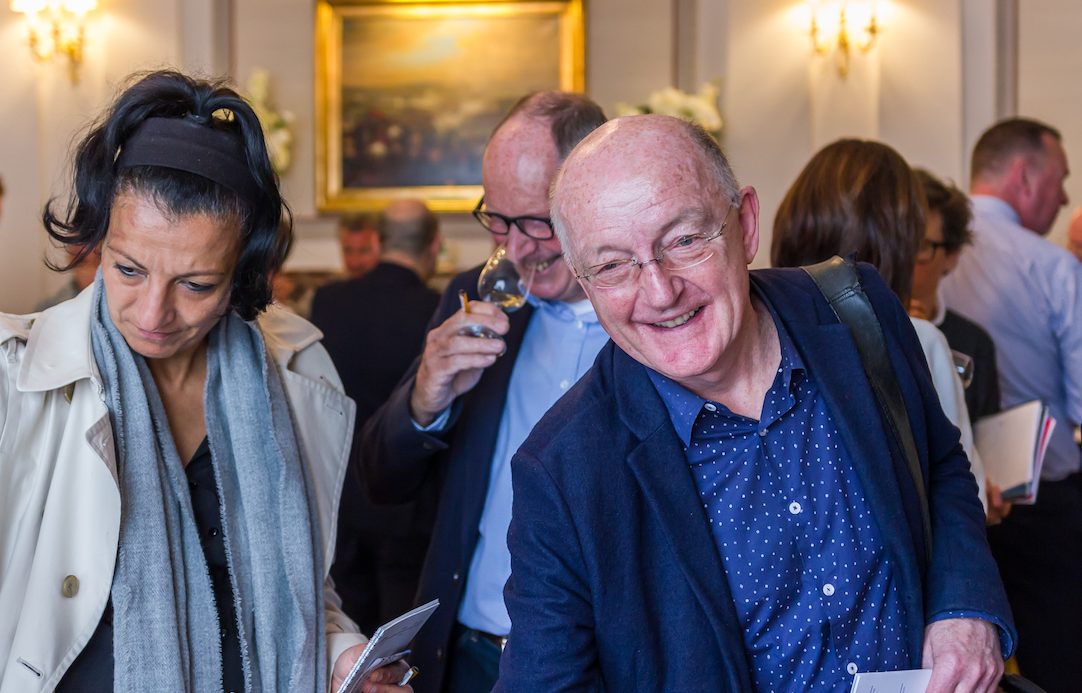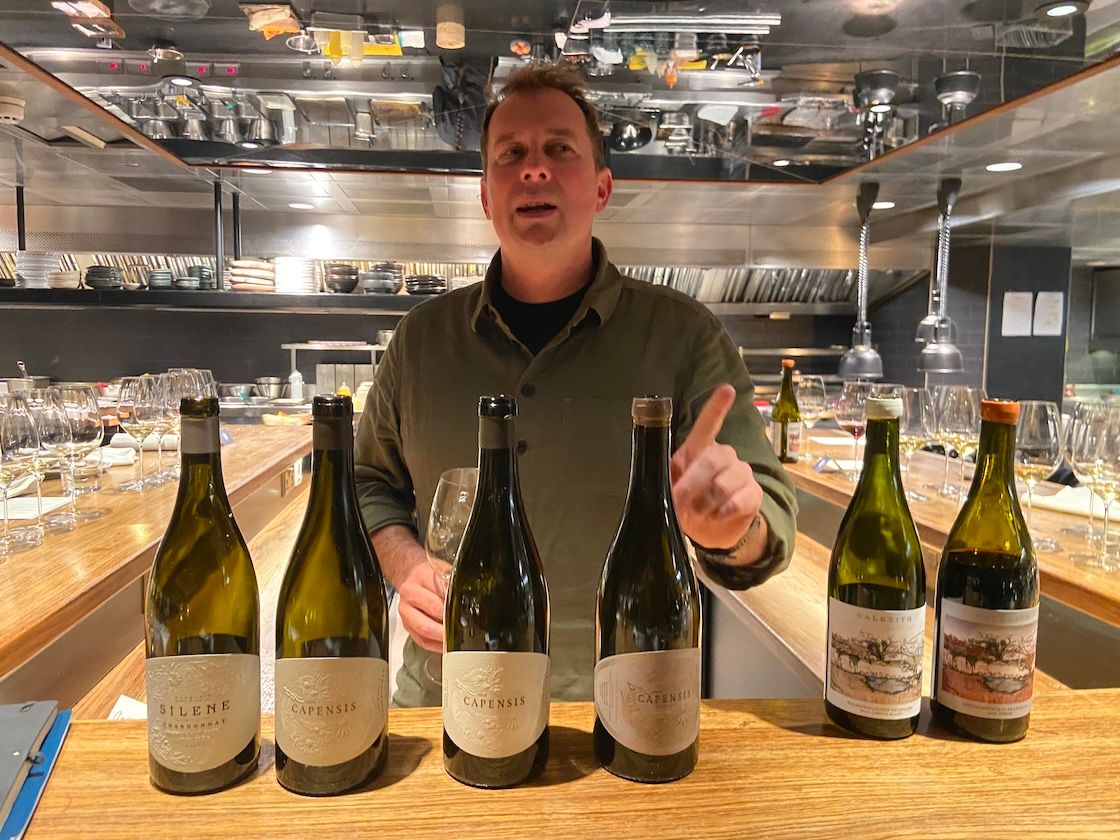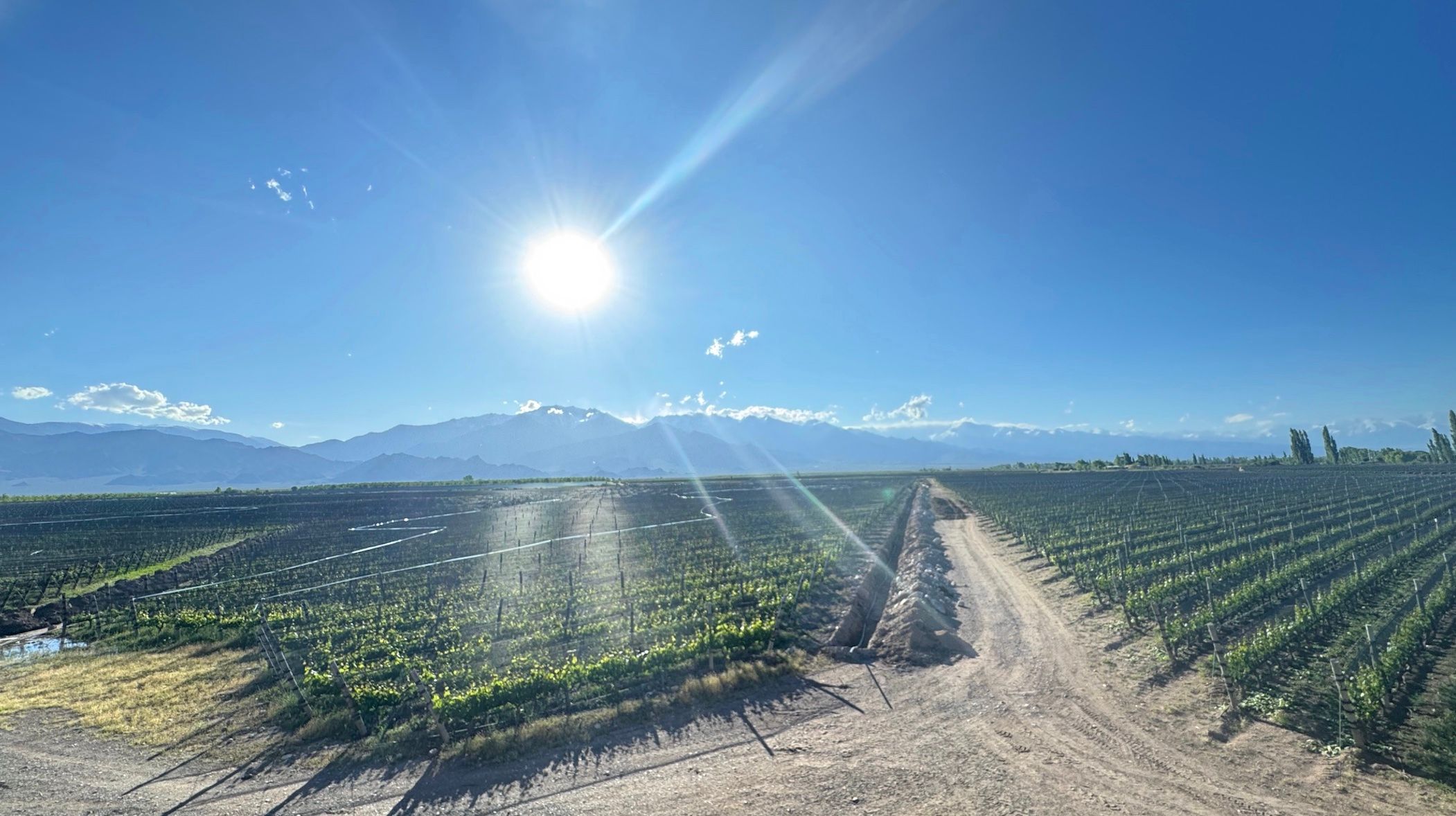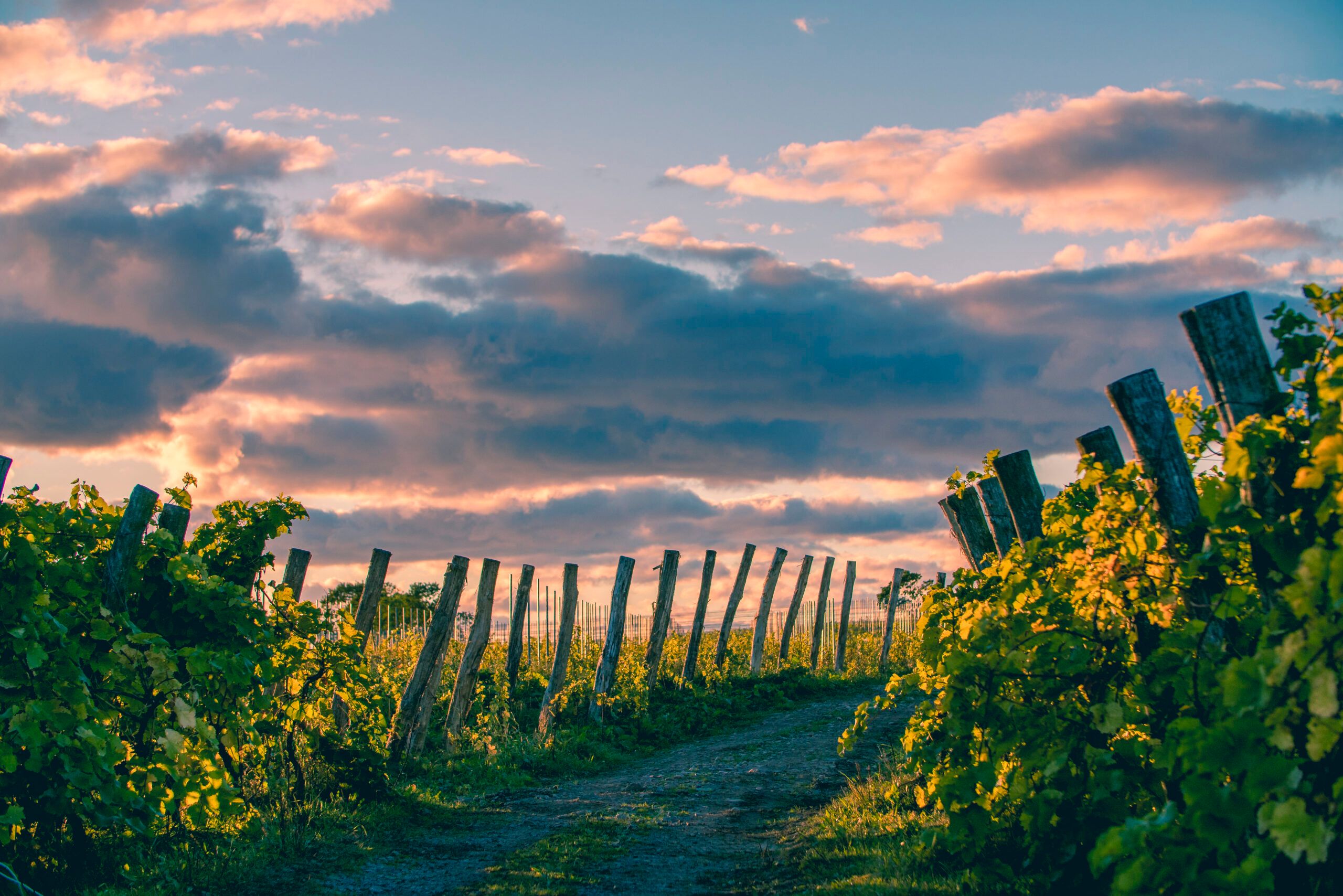Hearing Oz Clarke pronounce native Hungarian grapes such as Furmint, Hárslevelű, Járdovány, Juhfark and Kékfrankos, was reminiscent of the episode of Red Dwarf where everyone speaks backwards.*
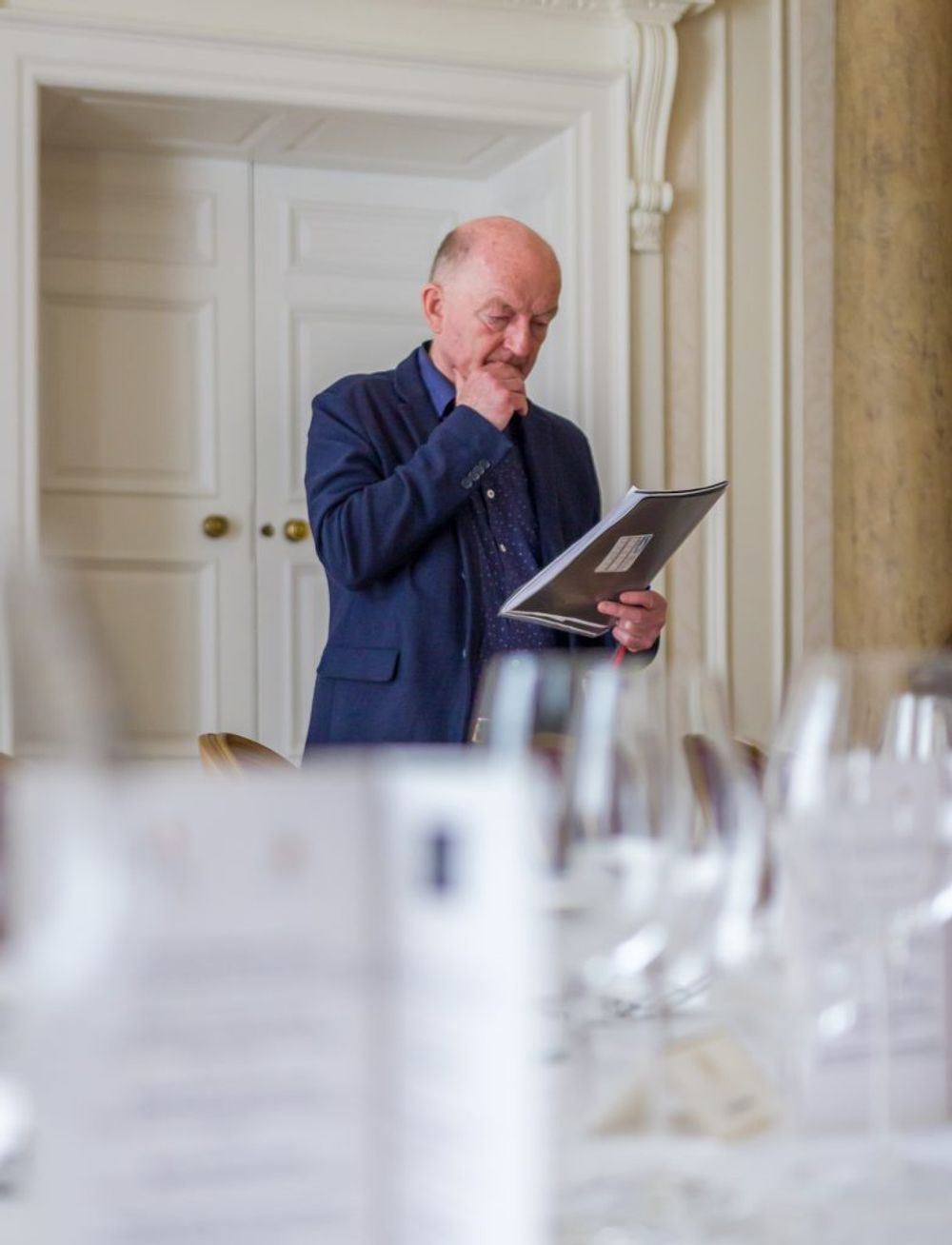
“Err…Hárseve…Hárslellev…Hárslevelű,” Oz Clarke, Hungarian Embassy, May, 2018
The trade is jam-packed with wine tasting lunches and dinners, with producers, importers and generic bodies keen to pin journalists and sommeliers down for a couple hours, show them a good time, show them some good wine, then send them off blinking into the late afternoon sunshine or twinkling streetlights with some new wine recommendations and tales on board.
It’s a system that works well, especially given the element of competition applied to venue selection, resulting in hacks and sommeliers being invited to dine in some of the finest and most-difficult-to-book restaurants around… and many simply can’t resist.
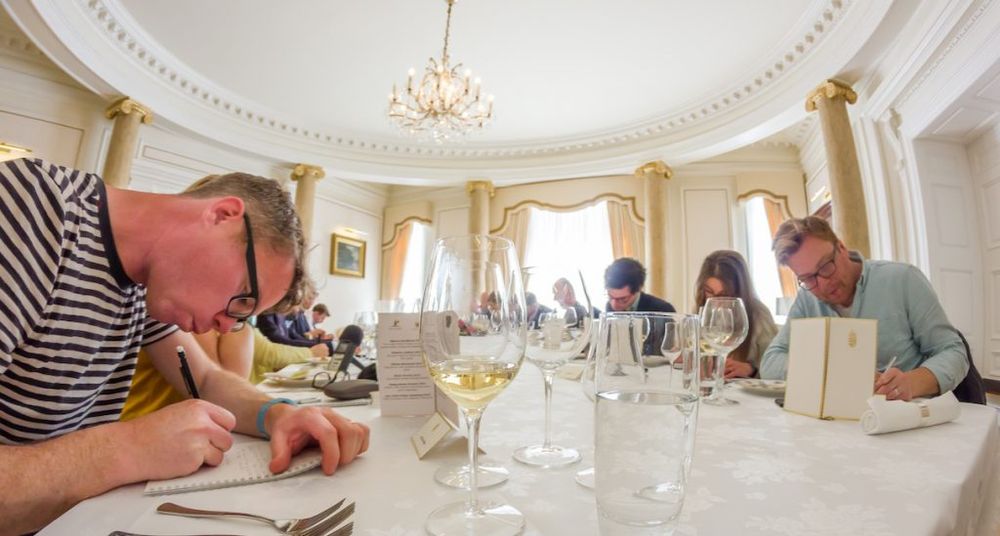
“Eyes down, no conferring…” Chris Wilson (l) realises there’s no such thing as a free lunch
A rarer food and wine pairing event is the brunch, but two weeks ago I enjoyed my first wine tasting brunch and it was a revelation: 10 small plates of Hungarian-inspired food to be enjoyed alongside 10 different Hungarian wines, all before 12 noon.
The tasting was hosted by Wines of Hungary at the Hungarian Embassy in London where upstairs an all-day tasting of 70+ wines was taking place. Downstairs in a finely dressed room His Excellency Mr Kristóf Szalay-Bobrovniczky – the Ambassador of the Republic of Hungary – was joined by Hungarian wine lover and expert Oz Clarke to host this intimate session… and there wasn’t a Ferrero Rocher in sight.
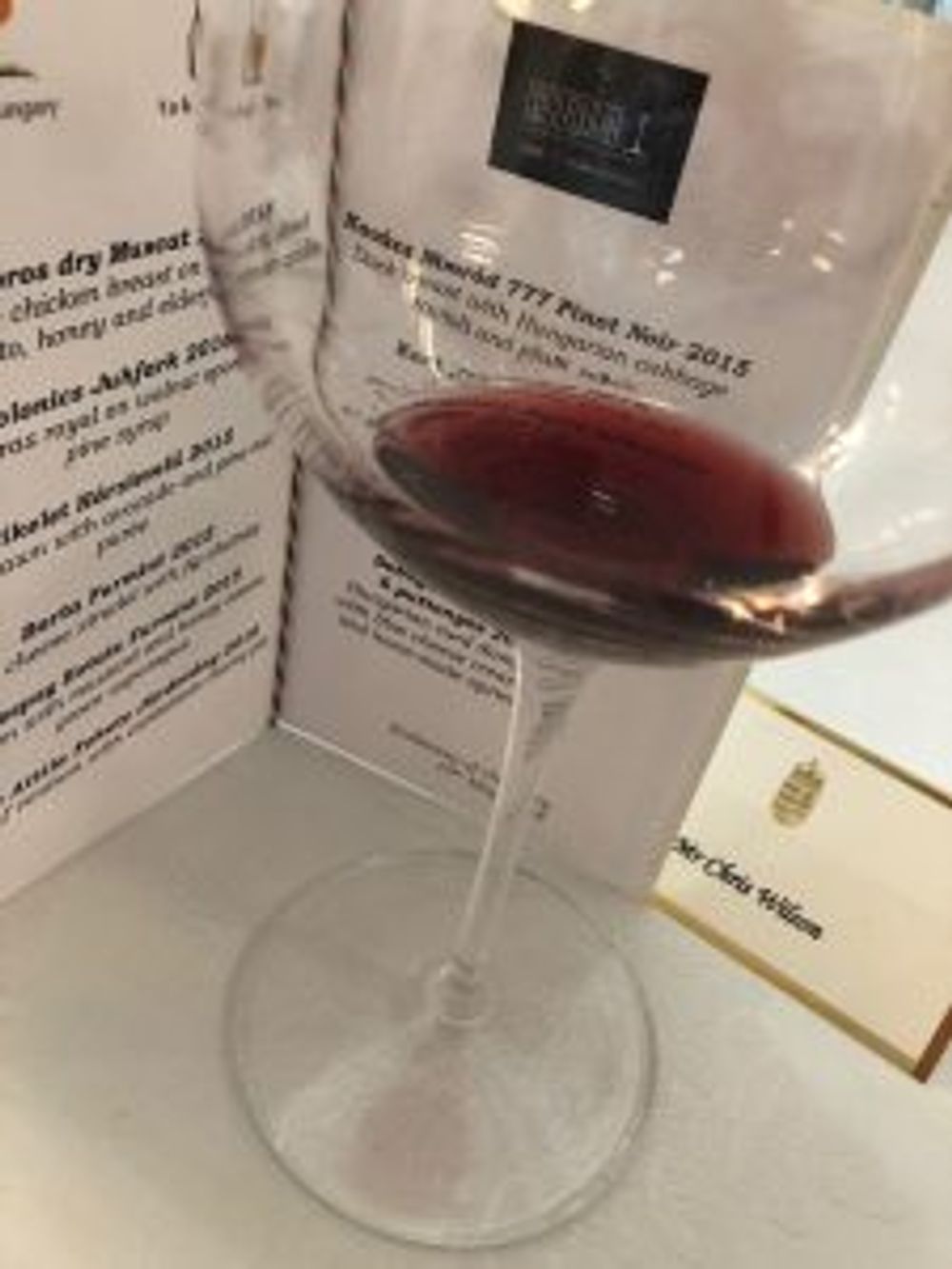
The dishes chosen not only gave an insight into traditional and modern Hungarian cuisine but really helped showcase the diversity and flexibility of Hungary’s wine grapes and styles. From dry Muscat and Pinot Noir to native grapes Furmint, Hárslevelű and Járdovány and classic sweet Tokaji, the breadth of styles and flavours really impressed.
Throughout the tasting Oz Clarke was utterly enthusiastic about the wines being shown, but also about the richness of history and tradition in Hungarian wine. He sees a bright future for Hungarian wine around the world, and especially in the UK, both into its traditional and super-modern guises.

“The great thing about the wine world in the 21st Century is that people have finally realised that the world of international varieties is yesterday’s world,” he enthused. “Young people don’t want to drink the wines their parents drank; it’s all about experimentation and rediscovering old varieties for them.”
The ‘youth’ could do a lot worse, then, than grabbing a few bottles of Hungarian wine next time they are on a discovering mission or fancy pissing their parents off.
So here are Oz Clarke’s top 10 Hungarian wines for starters
Majoros Dry Muscat, 2015
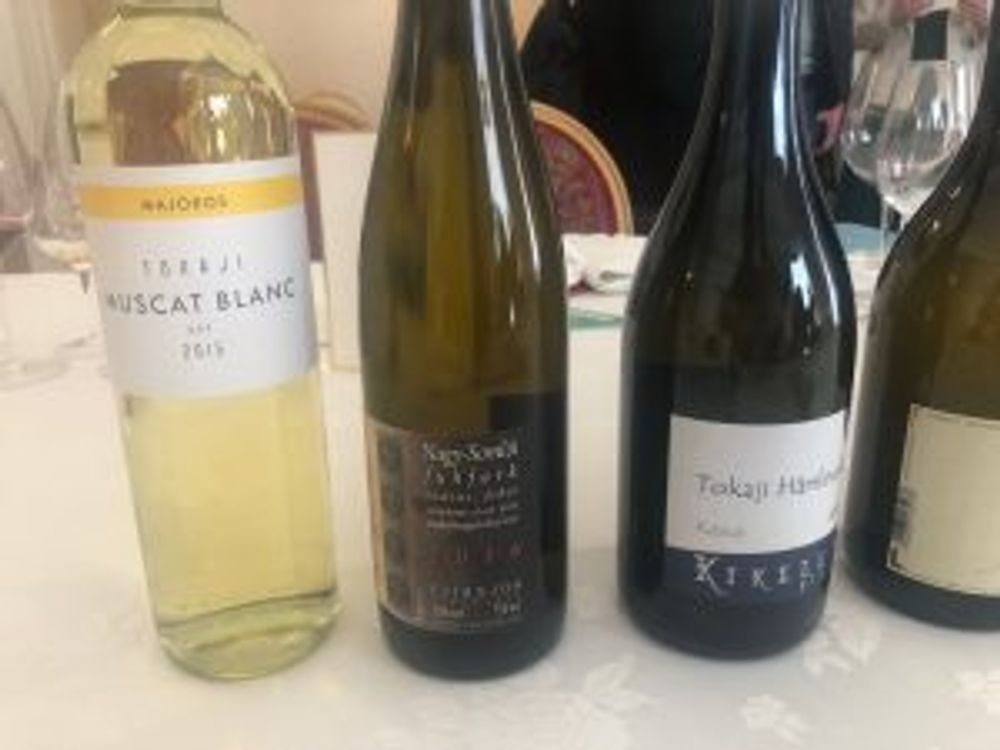
An international variety to start proceedings – although it should be noted that Muscat Blanc is known in Hungary as Sárgamuskotály – which puts it on a par with many of the other varieties in the tasting in terms of ease (or indeed difficultly) of pronunciation. This is fresh and vibrant with a hit of floral aromas and a distinctive grapefruit and orange peel tang.
Kolonics Juhfark, 2016
Once we’d got over the similarity of the producer’s name Kolonics to the word ‘colonic’ and stopped sniggering into our shirtsleeves here was a wine that was rich and full with concentrated tropical and stone fruit characters and a chewy, Burgundian texture. Made from the Juhfark grape – which means ‘sheep’s tail’ due to the long, cylindrical shape of its bunches – this hails from Somló where 80% of the world’s Juhfark is planted.
Kikelet Hárslevelű, 2015
A muscular straw-like nose with a dash of stone and stone fruit. This is lush and pure with a tangy and chewy profile – lots to get the tongue and teeth around. There’s apple blossom too and a sappy finish. Winemaker Stéphanie says that her wines are the first dry wines to be made in the region of Tarcal – she believes that only when you make dry wines can you understand the nuance and specifics of the terroir without characters being masked by sweetness.
Barta Furmint, 2015
Another dry wine from the same region (just two miles away from Kikelet) but worlds apart in style and character. This is from the ‘old king’ vineyard and is full and bright with ripe lemon acidity and tropical fruit (tinned pineapple and pineapple cubes). Such lively aromas and wonderful texture. A real crowd-pleaser and worked a treat with goat’s cheese.
Szepsy Estate Furmint, 2015
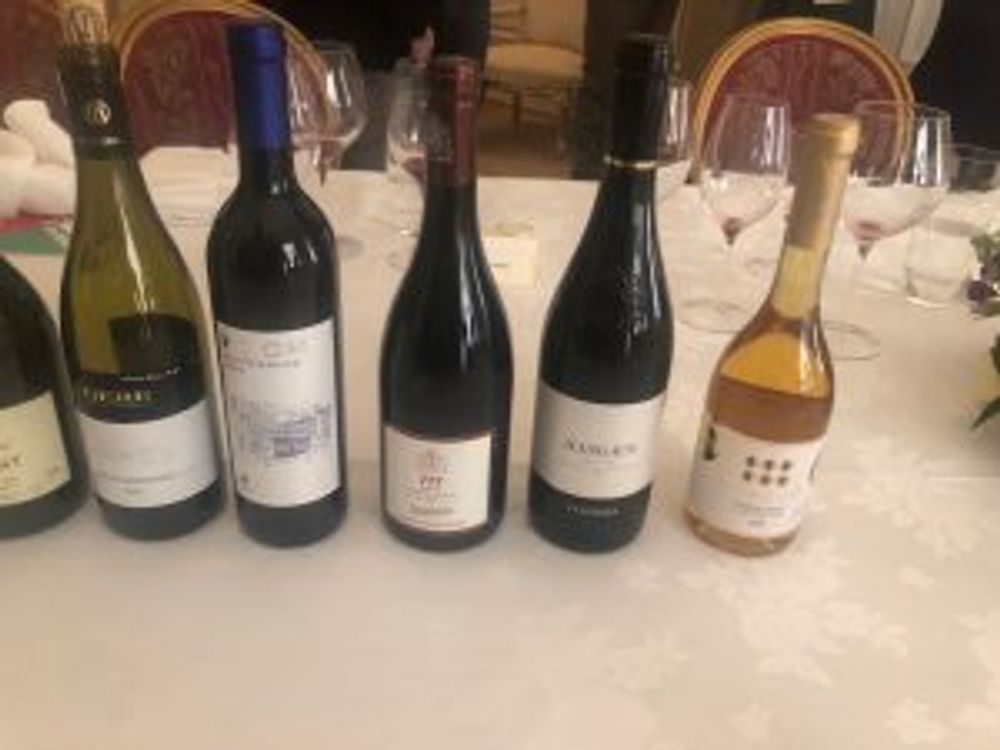
The Szepsy family have been making wine in the Tokaj region since the late sixteenth century and the current wines (some 50,000 bottles a year) are being made by the 18th generation of the family. It is the Szepsys who are credited with the discovery of the Aszú system of production, which is the recipe/ process for making Tokaj wines. This dry Furmint is straw-like in colour and aroma, rich, full and bold. It’s very generous with peach and pear characters and brilliant, focussed acidity.
Gere Attila Fekete Járdovány, 2016
The winemaker here is actually called Richard Gere, but changed his name to Attila. I mean, who wouldn’t? In 1978 he was given a few rows of vines as a wedding present and decided to have a go at winemaking. Some 40 years later he is producing top notch wines like this Járdovány. It has a deep cherry nose with a sniff of minerality, but really comes alive on the palate where it’s smoky and appetising with cranberry and cherry fruit. It’s dry, tannic and very serious.
Kovacs Nimrod 777 Pinot Noir, 2015
Named after the Dijon Pinot Noir clone 777 rather than the Boeing aeroplane this tries very hard to have the earthy subtlety of a Burgundian Pinot but is just a little too full-on. Shot through with red cherry and raspberry fruit it’s a lively, nervy fruit bomb with rough edges and some complexity. Very easy-drinking but not the best red wine in the room.
Koch Kékfrankos, 2016
The Koch family have been making wine in Hungary’s Hajós-Bajai area since 1748. The current custodian of the Koch’s winemaking crown is Koch Csaba who employs a non-interventionist approach and prides his indigenous varieties as highly as the estate’s international grapes. This Kékfrankos is flinty and spicy with plum and black fruit and a lip-licking smoothness.
St Andrea Hangacs Egri Bikaver Superior, 2013
This single-vineyard Kékfrankos-dominant blend also has Merlot, Cabernet Franc, Pinot Noir and Cabernet Sauvignon in the mix. It has a real sweetness on the nose with ripe strawberries and plums at the fore. There’s some liquorice and spice on the palate as well as ripe black fruit and black olive. Rich, powerful and generous.
Dobogo Tokaji Aszu 6 Puttonyos, 2008
A 10-year-old sweetie to finish. This has an amazing nose, it’s all nectarines and apricots, strobe lights and blown speakers. There’s a stark and unswerving purity here which cuts through the sweetness to offer some savouriness on the mid-palate. A graceful finish – this flows down the throat – with an elegant and refined lift at the very end.
* Thanks to Mike Turner from Please Bring Me My Wine. We unashamedly nicked this from one of your Tweets.
